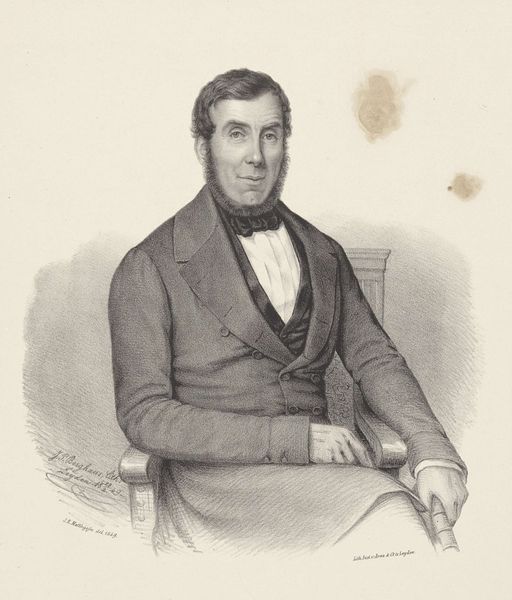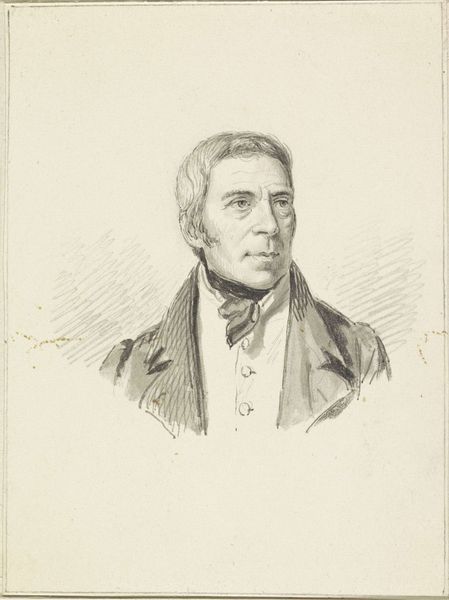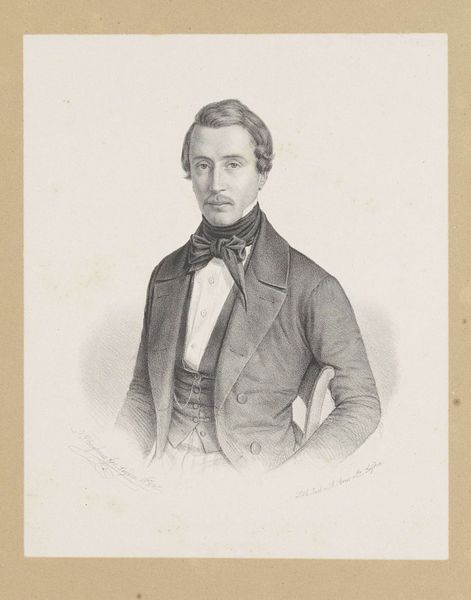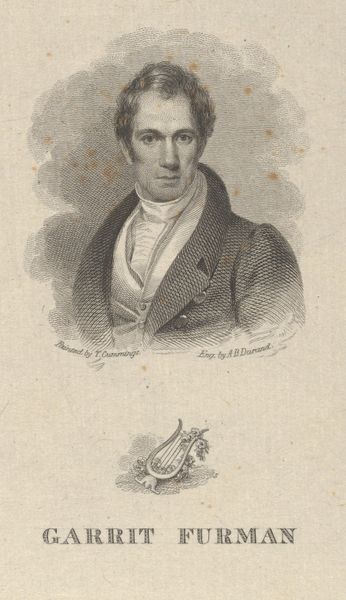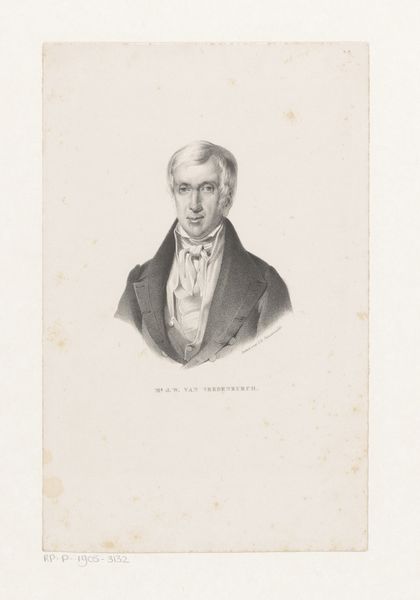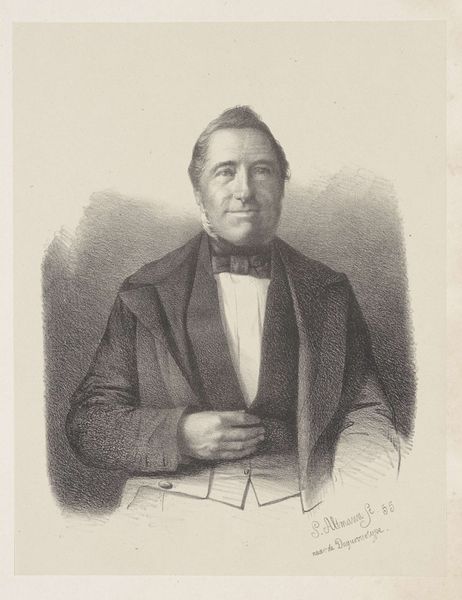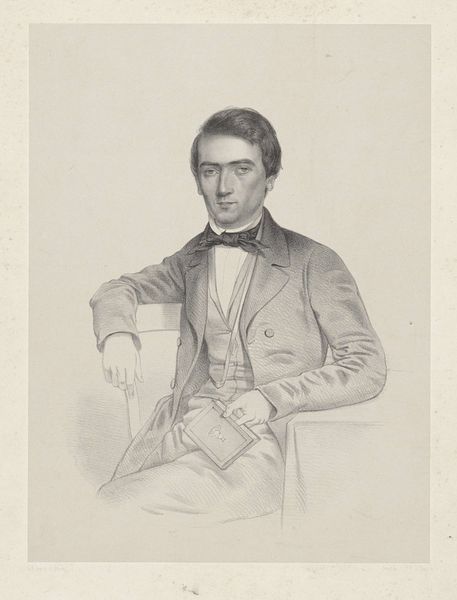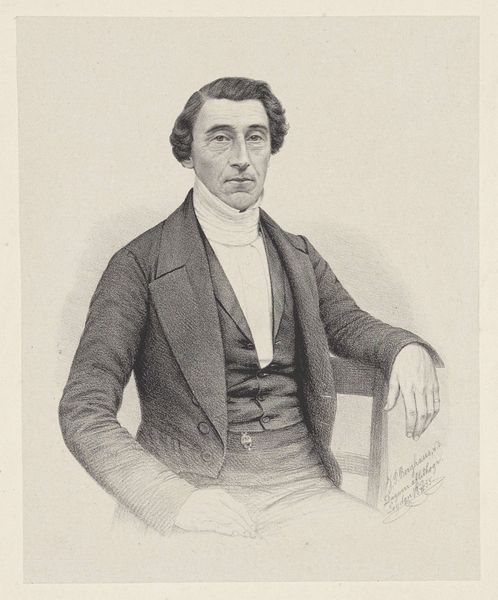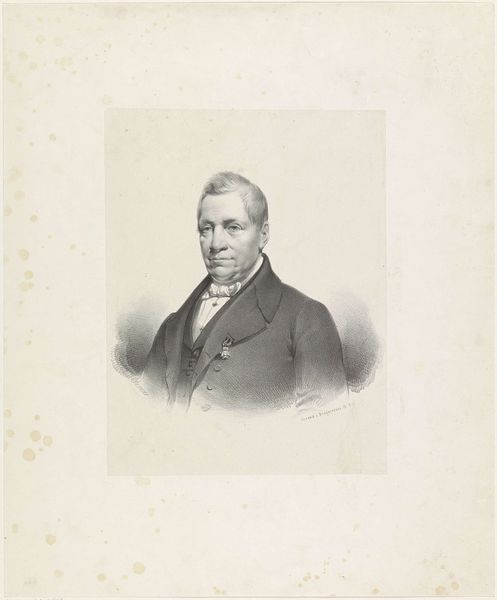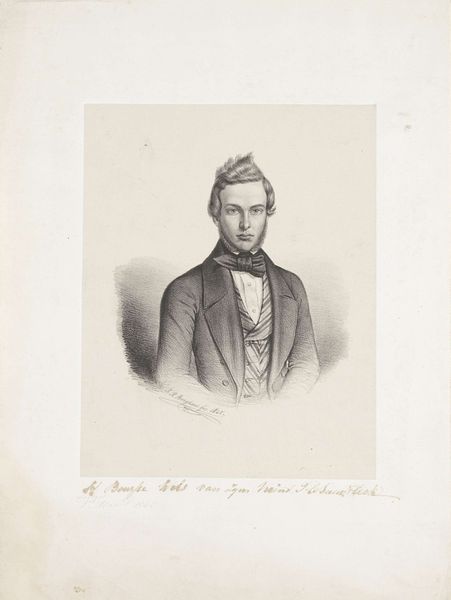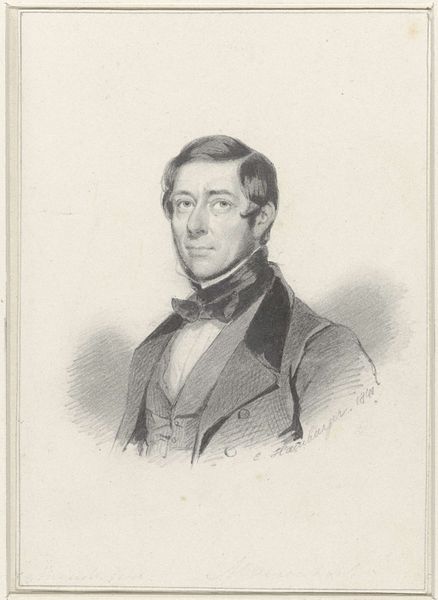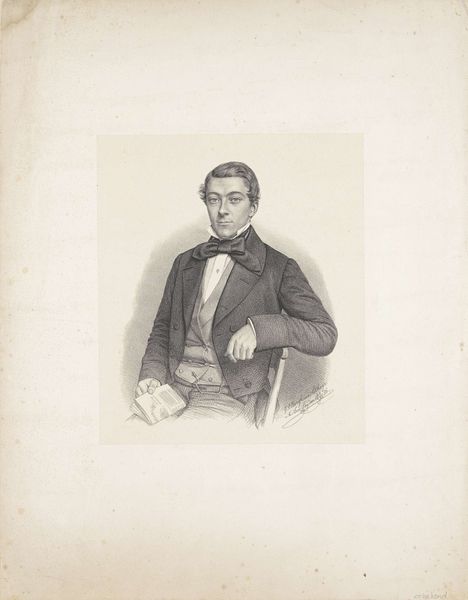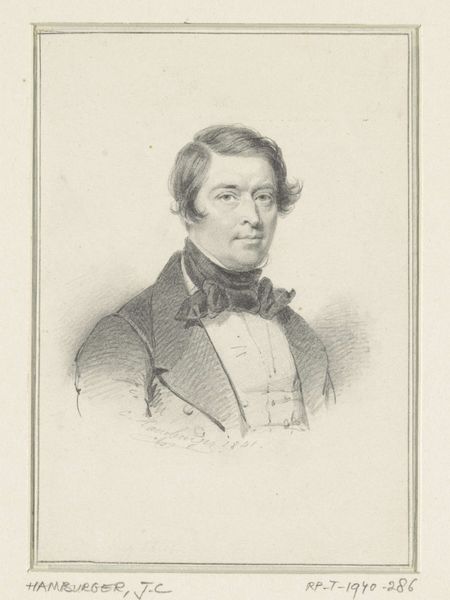
drawing, pencil
#
portrait
#
drawing
#
pencil drawing
#
pencil
#
portrait drawing
#
academic-art
#
realism
Dimensions: height 365 mm, width 275 mm
Copyright: Rijks Museum: Open Domain
Editor: This is a pencil drawing, "Portret van J.J. van Oosterzee," dating from 1818 to 1871, attributed to Isaac Cornelis Elink Sterk and housed at the Rijksmuseum. It's a very formal portrait. The detail in the rendering of the face is remarkable, juxtaposed against a more broadly rendered body. What do you see in this piece, looking at it through a formal lens? Curator: Indeed. Note how the artist uses subtle tonal gradations, building volume and texture primarily through the density and directionality of the pencil strokes themselves. Consider the contrast between the crisp, linear precision defining the subject's features, and the looser, more suggestive handling of light and shadow in the background and lower body. The artist masterfully employs line and value to achieve both a realistic likeness and a sense of depth. What does that suggest to you? Editor: It suggests a focus on the inherent qualities of line and shading in drawing. How the sharp details around the face bring it forward and give it the emphasis, even as the composition follows academic portrait conventions. Do you see that balance in academic art often? Curator: It is not always handled so elegantly. Often, in the service of capturing an individual's likeness in precise detail, we see portraiture become overly literal, losing a sense of vitality. Here, the contrast in styles enhances the illusion, activating the surface with two distinct kinds of marks. This lends the drawing a palpable sense of visual energy. Editor: So it's the push and pull of the drawing techniques themselves that make it particularly compelling? It is an intriguing emphasis. Curator: Precisely. Through rigorous formal analysis, we can uncover unexpected dynamics that elevate even seemingly conventional works. This approach allows us to discover not merely what a piece represents, but how it speaks to us, as a self-contained artistic gesture. Editor: It has given me a great amount to contemplate! Thank you.
Comments
No comments
Be the first to comment and join the conversation on the ultimate creative platform.
